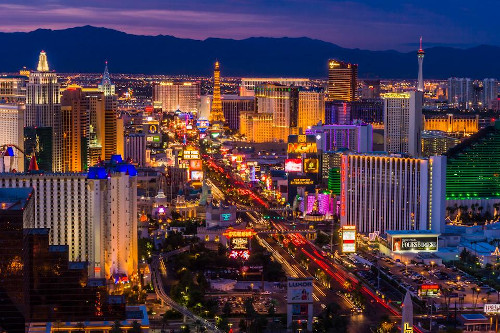This Is What The Future Of Hotels Looks Like. Get Ready For Shrink Wrap And “Health Detectors”
The last time I went to Las Vegas, I dropped $120 for a 1600 square foot two-bedroom corner suite with a wrap-around travertine balcony at a shiny new casino hotel with three marbled jacuzzi tubs and four flat HD screen TVs.
At guest registration, my wife and I waited an hour to check in. We stood in line another 25 minutes for an elevator, packed into a narrow lobby within inches of hundreds of other guests wheezing through clouds of Parliament smoke.
My wife, already exhausted from the 5-hour economy full flight in, was seething. I was still congratulating myself on scoring a screaming hot deal on the Strip. Order some in-room dining with a bottle of wine. A little turn down service from housekeeping. An hour massage at the spa in the morning. She’ll be fine.
 High density now means higher risk. Las Vegas Strip, Nevada
High density now means higher risk. Las Vegas Strip, Nevada
Three years later, midstream COVID-19, nothing in hospitality is fine.
Hotels are hemorrhaging business—second only to the airlines. As of late April, 80% of hotel rooms in America were empty. No one’s traveling. Cancellations are staggering. Huge swathes of staff—from housekeeping and food and beverage, to bellhops, reservationists, and valet—have been furloughed or sacked altogether. Most Popular In: ForbesLife
Financially, the coronavirus contraction has sent the lodging sector overall into a short-term death spiral.
Cash-strapped boutiques are teetering on bankruptcy, while short-term rental start-ups are slashing rates by 55% or more just to pay leases and utilities. Greece is predicting that 65% of its hotels could go out of business entirely. Meanwhile multinationals like Marriott and Hilton are hoarding cash on hand and girding for a slow recovery while business travel remains locked down and summer travel plans grind to a halt.

